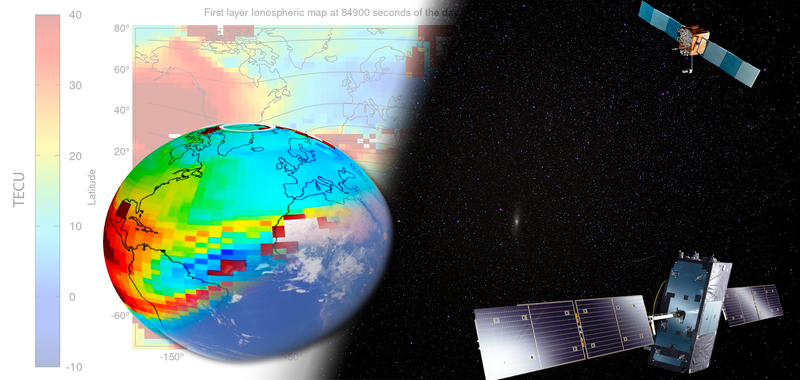Cristhian Timoté defends his thesis on contributions in ionospheric modeling in real time
Mar 29, 2023
Cristhian Timoté defended his thesis co-supervised by Dr. Guillermo González-Casado and Dr. Miquel Escudero on March 27 at the North Campus. Entitled "Contributions to real-time monitoring of the ionosphere using GNSS signals", the thesis presents the set of algorithms implemented in real time to be able to model the ionosphere and offer high-precision corrections to GNSS users
This document presents the collection of four manuscripts published during my Doctoral academic formation, which main goal has been the real-time implementation of tools to monitor the ionosphere using Global Navigation Satellite System (GNSS) signals. Despite the fact that there is a vast literature on ionospheric modelling, the state-of-the-art becomes narrow when referring to real-time developments, especially fulfilling precise requirements on accuracy, performance, coverage, and confidence in the generated products. The main contribution of this work to the scientific community is the deployment of ionospheric-related products to monitor in real-time the state of the ionosphere.
The first and second publications targeted the implementation of a novel strategy based on a definition of a GNSS Solar Flare (SF) monitor to automatically confirm Solar Flare Effects (Sfe) in geomagnetism. In the first scientific article, it is inspected the methodology used to fine-tune (adapt) a SF monitor, working with an eleven years period of data to statistically correlate detected SF using GNSS signals with respect to SFe. The results demonstrated that the proposed GNSS Solar Flare monitor can confirm Sfe events when traditional Sfe detectors are not able to respond categorically. The second publication details the methodological approach for defining the proposed GNSS Solar Flare monitor, focusing on the theoretical formulation of the Slant Total Electron Content (STEC) obtained.
The third contribution used GNSS signals to detect the presence of Medium Scale Travelling Ionospheric Disturbance (MSTID) within a network of permanent GNSS stations that provide the high-accuracy positioning service known as Network-Real-Time Kinematics (NRTK). The effects of a MSTID are characterized in terms of fluctuations in the electron density in the iono- sphere, experienced differently by each one of the GNSS stations used as reference receivers within the NRTK, and resulting in a degradation of the positioning of any user of the service. The MSTIDidx index is proposed to warn users of the presence of a MSTID, implementing a novel methodology for assessing the errors in positioning based on fixing carrier-phase ambiguities in undifferenced measurements. The adoption of the proposed MSTIDidx index proves to be efficient to reduce the errors in the user positioning by excluding measurements polluted by the MSTID effects, reaching accuracy levels within the overall network similar to the ones achieved by users located close to reference stations (and therefore, less affected by MSTID effects).
The fourth publication is the core of my doctoral thesis and presents the real-time implemen- tation of a model to generate ionospheric corrections suitable to fulfill the Galileo HAS. The analyzed ionospheric correction system is based on the Fast Precise Point Positioning (FPPP) technique, in which it is highlighted the benefits of integer ambiguity resolution to obtain unambiguous carrier phase measurements as input to compute the FPPP ionospheric model. Additionally, this contribution underlines the benefit of the implemented strategy, in terms of the geometric model used by the ionospheric modelling and the dataset implemented. In terms of assessing the errors of the FPPP ionospheric corrections, the 99% of the Global Positioning System (GPS) and Galileo errors in well-sounded areas and in mid-latitude stations are below one total electron content unit, which is in line according to the required ionospheric accuracy for the Galileo HAS. Furthermore, alongside the ionospheric corrections, it is presented some additional products generated by the FPPP Central Processing Facility (CPF), produced in real-time and with accuracy levels suitable to any HAS application.

Share: